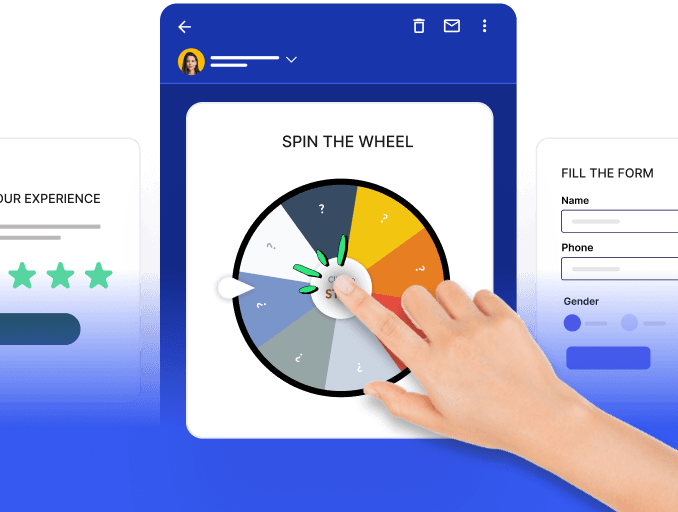Let's face it, running a business is all about getting the most bang for your buck. You constantly strive to make your customers buy more from you to maximize profits, increase revenue, and keep them happy in the process. That's where volume discounts come in – a powerful tool online stores can leverage to achieve their goals.
Imagine this: you sell trendy phone cases. They’re wonderful but customers would only want to buy a single phone case at a time because they just need one. Here's where a volume discount swoops in to help you. What if you offer a better deal - maybe a 10% discount for buying two cases and a 15% discount for three or more? This incentivizes customers to stock up on their favorite designs or grab a couple more for their friends as it means that the more they buy, the more they save. It also increases your average order value and boost sales.
Table of contents
What are volume discounts?
Volume discounts, also known as quantity discounts, are a pricing strategy where customers are offered price reductions or discounts when they purchase a product in higher volumes. The idea behind the strategy is that the seller is willing to offer a lower unit price for larger orders becuase the high number of products in a single order can still generate significant revenue for the seller instantly.
Picture this: you run an e-commerce store selling trendy gadgets. By offering a volume discount, where customers get a lower price per unit when they buy in bulk, you not only encourage larger orders but also ensure customer loyalty and satisfaction plus boosting sales for your business.
This discounting could also be a percentage off the total bill for exceeding a certain quantity, or tiered pricing structures where the price per unit drops as they add more items to their cart.
Benefits of volume discounts
Volume discounts offer benefits to both businesses as well as customers. Let’s take a look at some common benefits of volume discounts.
Increased sales volume: Let's face it, everyone loves a good deal. By offering volume discounts, you're essentially telling customers, "Buy more, save more!" This entices them to purchase larger quantities, leading to a significant jump in your overall sales volume creating a win-win situation. Think about it - a customer who might have hesitated at the regular price might jump at the chance to buy more and save.
Reduced profit margins: Let's face it, selling at a discount means you earn a little less per item. They eat away at your margin, the very lifeblood of your business. You'll be selling more number of units, but at a lower price (per unit), so make sure the increased sales volume outweighs the discounted rate. It can be a relentless cycle, pushing you to sell more and more just to break even. According to Insign2profit's study, a manufacturer had to sell significantly more products to offset a 5% discount, specifically 38% more, to maintain profitability.
Economies of scale: Here's the secret sauce: When you produce or purchase in larger quantities, the cost per unit often goes down. By offering volume discounts, you encourage these larger orders, allowing you to purchase in bulk and potentially lowering your per-unit cost. This allows you to offer even more competitive pricing in the future translating to even better margins for you!
Supplier relationships: Here's a bonus perk: strong supplier relationships are key to any successful business. By consistently buying in larger quantities, you become a more valuable customer to your suppliers. This can lead to better pricing, early access to new products, and even stronger partnerships down the line.
Drawbacks of volume discounts
Now, Let’s talk tradeoffs. Volume discounts are powerful, but they're not without their challenges. Here's what to watch out for:
Reduced profit margins: Let's face it, selling at a discount means you earn a little less per item. They eat away at your margin, the very lifeblood of your business. You'll be selling more number of units, but at a lower price (per unit), so make sure the increased sales volume outweighs the discounted rate. It can be a relentless cycle, pushing you to sell more and more just to break even.
Cannibalization of smaller sales: Ever notice how some people only buy things on sale? Volume discounts can train your customers to wait for the next price drop instead of appreciating the value your product offers. Customers who would normally make frequent purchases might just turn into occasional shoppers who would consolidate their needs into fewer orders. While this would still mean similar sales, it would decrease the revenue you would generate by selling the same quantity of a product. It would also decrease the frequency of your sales and reduce continuous engagement.
Difficulty in maintaining stock levels: Discounts often lead to a surge in demand. Great, right? Not if you're caught with your stockroom empty. Volume discounts can throw your inventory management into disarray, leading to frustrated customers and lost sales. This might happen especially for sellers with limited storage space who cannot maintain a huge inventory and get a bulk order to fulfill. Conversely, if you deal with perishable or seasonal goods, overstocking can lead to losses if the stock isn’t sold out.
How to structure a volume discount program
While volume discounts can chip away at your profits, there’s a way you can incentivize larger purchases without sacrificing your bottom line. It’s in structuring your volume discounts for maximum impact. Let's break it down:
Step 1: Define your goals
Before you start throwing out discounts, get crystal clear on your goals. Is your goal to skyrocket sales volume? Maybe you need to clear out that inventory, full of last season's gadgets. Or perhaps you want to attract new customers. Knowing your goal (increased sales, reduced inventory, or customer acquisition) will guide your discount structure.
For example, imagine you have a surplus of winter jackets. Your goal would be to move that stock fast. A tiered discount program might be ideal - Offer a small discount for buying one jacket but a steeper discount for buying two or more. This incentivizes bulk purchases and helps you clear that inventory efficiently
Step 2: Determine your discount structure
There are two main ways to structure your program - through volume pricing models.
Tiered discounts: Tiered volume discounts offer larger discounts for big orders. Imagine a bakery offering 5% off for 10 cupcakes, 10% off for 20, and 15% off for 30 or more. This tiered discount structure motivates customers to climb the discount ladder and buy more. Customers would buy just a few more to get that extra discount in the next tier.
Threshold discounts: Threshold volume discounting triggers a discount once a certain purchase amount is reached. For example, "Buy $100 worth of office supplies and get 10% off." This approach encourages customers to add a little extra to their cart and reach that sweet discount zone.
Other considerations: Bundle or package discount deals - where you pre-bundle related products at a discounted price/ lower rate, can be a powerful tool. Think of a phone with a bundled case and screen protector. Free shipping with large orders is another attractive option. Free shipping thresholds incentivize large quantity orders while eliminating a major pain point for your customers.
Step 3: Track and analyze results
Once you’ve implemented volume discounting, you need to track your results. Are sales trends going up, especially for larger orders? Are you attracting new customers or solidifying relationships with existing ones? Is your inventory moving as planned? The data will tell you if your program is hitting the mark. If a specific tier or threshold isn't performing, tweak it. Is a particular customer segment responding well? Double down on those efforts. Use this data to refine your program and pricing models, and ensure it's delivering maximum impact.
Important considerations for businesses
Here are some important best practices and considerations that you must look into when you plan to or implement volume discounting:
- Do a cost analysis: Before you launch any discount, do a thorough cost analysis. Factor in storage costs for excess inventory, potential product obsolescence (perishables), and the actual cost of the discount itself. Most importantly, ensure the discount rate still allows for a healthy profit margin.
- Communicate discount policies clearly: Clearly communicate your discount policies. No confusing jargon, Clearly state the discount percentage, terms and conditions, qualifying criteria, duration of the offer, and any exclusions. Announce your discount across all your platforms – website, social media, etc. Don't let unclear communication turn a potential customer into a walking negative review.
- Maintain healthy profit margins despite discounts: Discounts shouldn't be a race to the bottom. Imagine a store where everything is always on sale – how can you ever justify the full price? Maintain healthy profit margins by offering strategic discounts on specific items or during targeted promotions. This keeps your brand image strong and your business sustainable.
- Foster supplier relationships: Foster strong relationships with your suppliers. Negotiate bulk discounts or favorable payment terms to offset the cost of your promotions. A happy supplier can be a valuable partner in maximizing your profit potential.
Conclusion
Volume discounts, when used strategically, can be a powerful tool to unlock explosive sales growth, clear out stagnant inventory, and build long-lasting customer loyalty. Remember, the way a discount is presented can influence the perceived value. Volume discounting is all about creating strategic volume incentive deals and the right pricing tiers, that drive sales and build lasting customer relationships. With a little planning and creativity, volume discounts can become the secret ingredient that propels your business to success. Happy selling!







